Chimney Parts and How Do They Work 2022
Professional chimney service experts like ours are educated to know the names of every part within your chimney and how it works. Unfortunately, most homeowners are not as well versed on chimney lingo. You do not have to know your chimney as well as an expert. However, it is important to know the basics.
Here’s the thing:
Knowing the part of your chimney and how they work can help you know if the technician is being honest with you or using a bunch or jargon to appear knowledgeable to justify overcharging you. t is helpful to have a basic understanding of chimney nomenclature and how the parts work. Here is a guide that will show you everything that you should know about the different chimney parts.
Chimney parts diagram
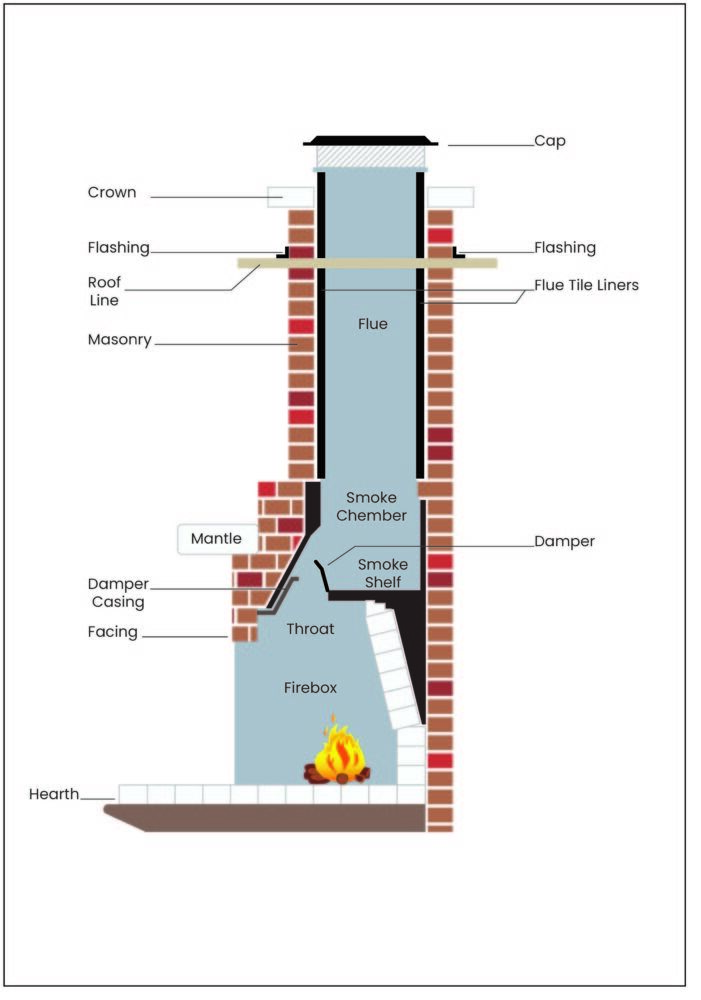
Chimney Cap
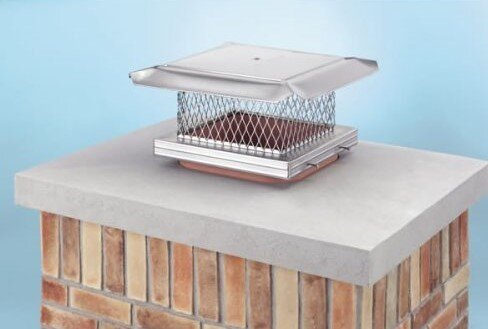
The chimney cap is a metal device with screening material around it that sits on the very top of your exterior chimney stack preventing moisture and animals from entering the chimney flue.
Most caps have a metal mesh section or thin gap that sits over the chimney opening and allows smoke to escape into the open air. The most popular type of chimney caps are universal. However, custom chimney caps that cover a larger portion of the crown have been found to be much more effective.
The cap has several important purposes. First, it protects your chimney from rain, which can be damaging if it falls directly into the chimney. Second, it discourages birds and other animals from making nests in your chimney. Third, it helps prevent wind from enter the chimney during storms.
Chimney cap purposes
- Protects your chimney from rain, which can be damaging if it falls directly into the chimney.
- Missing chimney caps – which can happen in windstorms
- Especially stubborn birds or pests making nests
How to tell that is time for a chimney cap repair or replacement?
- Bent or damaged metal mesh
- Missing chimney caps – which can happen in windstorms
- Especially stubborn birds or pests making nests
Chimney Crown
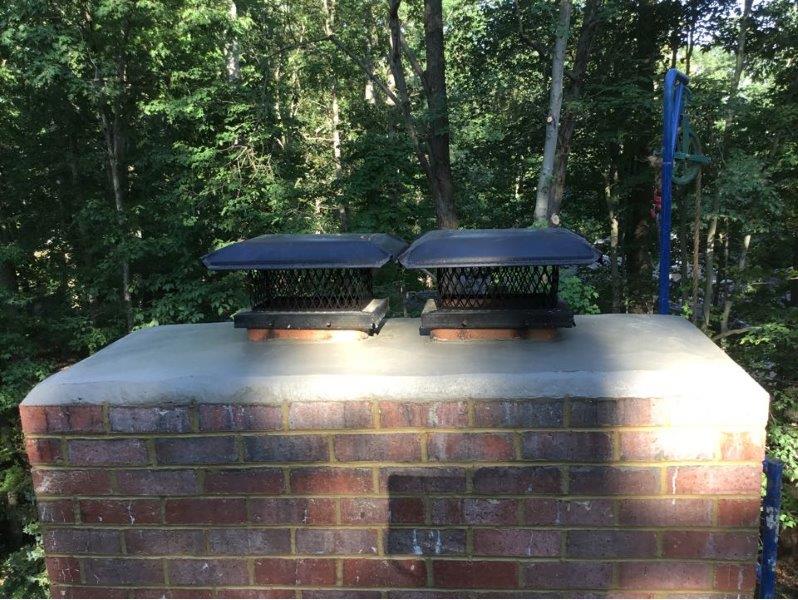
A chimney crown is a concrete slab that sits on top of your masonry chimney protecting the chimney around the flue. Crowns are sloped to guide water away from your chimney protecting the internal chimney parts and masonry.
How To Tell that is time for a chimney crown repair or replacement?
- Cracks and fading mortar where chimney pipes come out of the crown
- Cracks in the crown
- Standing water on the crown that isn’t going away.
Chimney Chase Cover
A chase cover is a metal pan that is often used on top of chimneys that have vinyl or metal siding. The chase cover function in similar fashion as the chimney crown. Chase covers are commonly found in pre-fabricated or factory built systems.
Chase covers are made in a variety of sizes to fit specific chimneys.
Signs It is Time for a Repair/Replacement:
- Warping or stained covers
- Cracks or failed seals at the edge of the cover
- Black or burnt patches
Chimney Flashing
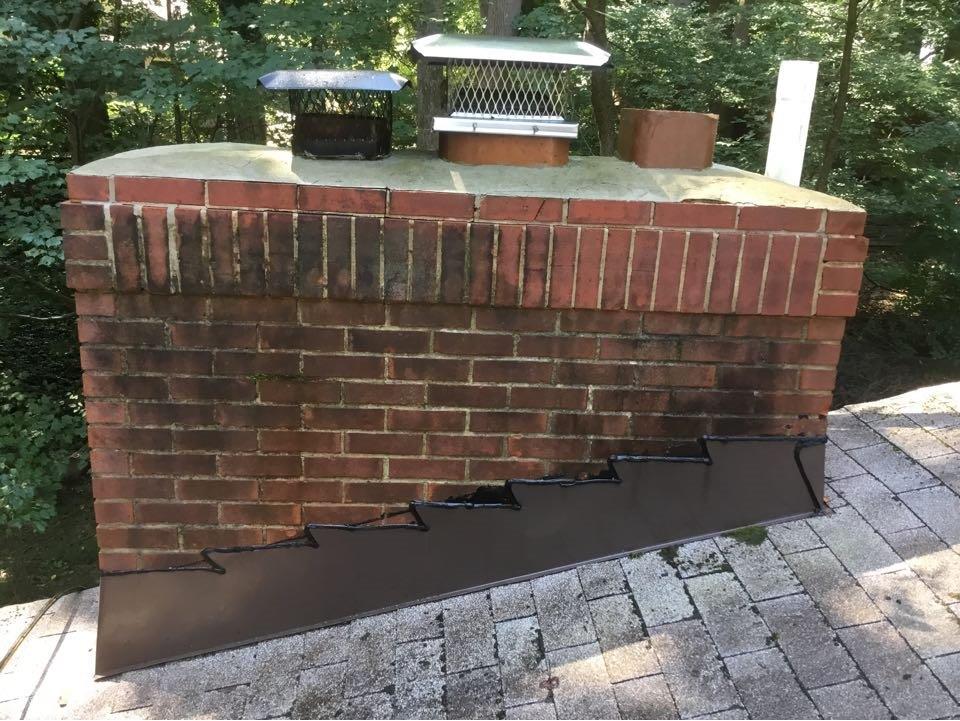
Flashing refers to metal strips that cover the joint where the base of your chimney stack meets the roof. They are made of durable metal and tightly sealed so that no leaks can form at these vulnerable edges. Failed chimney flashing is a common cause of chimney leaks. The best chimney companies and roofers use counter flashing
Chimney Flashing Facts
Failed chimney flashing is one of the most common causes of chimney leaks. Be sure to choose a chimney service that use counter flashing.
Signs It is Time for a Chimney Flashing service
- Warped flashing that’s detached from the chimney
- Rust and corrosion
- Missing pieces of flashing
Chimney Flue
Moving to the inside of the chimney, the flue is the open section in the middle of the chimney that smoke uses to travel up and out of your chimney. Combustion particles are very hot and naturally float up from the fire, but they need to be directed up the chimney through the flue into the open air. Flues have liners that protect the flue from heat and particles.
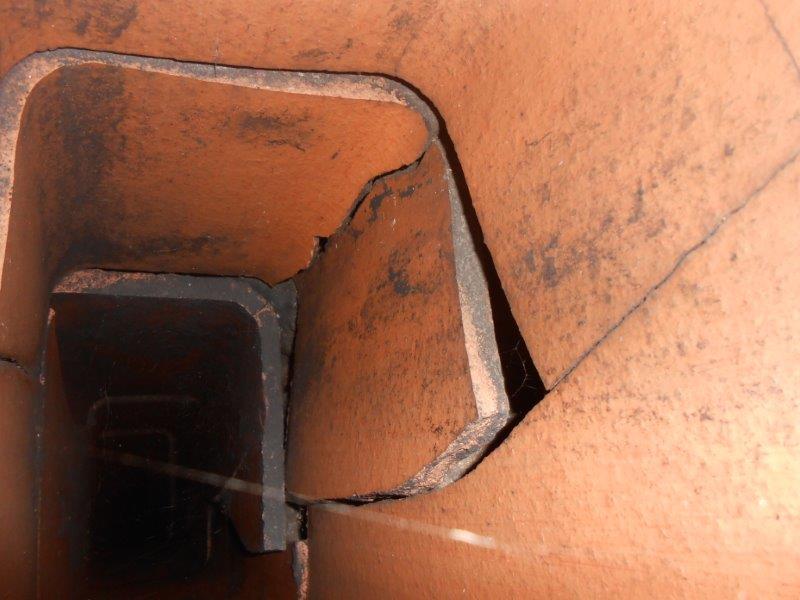
Signs that you may need chimney repair services
- Excess smoke
- Signs of creosote build-up inside
- Unexpected heat or bulging
Flue Liner
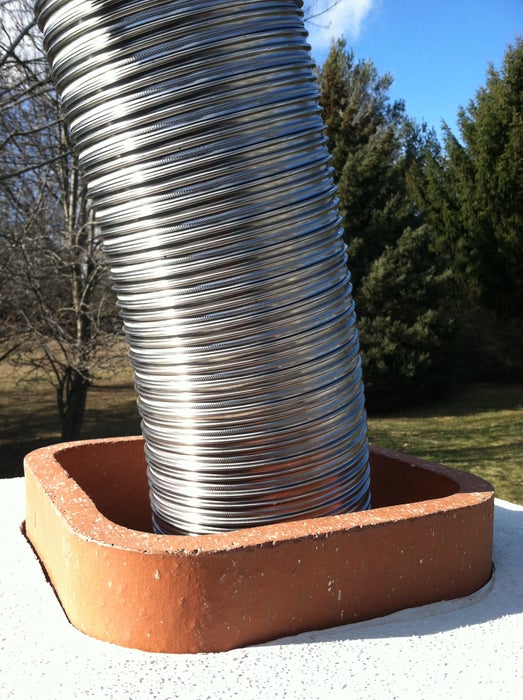
The flue liner is the interior layer that protects the flue and other parts of the chimney system from heat and fire damage as smoke and other combustion materials move through it. These days, flues are typically made from clay or metal.
As we mentioned above, combustion particles (like smoke) can release a lot of heat when rising through the flue. The liner’s job is to absorb this heat and protect the more vulnerable parts of the flue – as well as the rest of the chimney and even the interior walls of the home, which might otherwise be in danger of catching on fire.
Because of the stack effect – the temperature difference between the air in the fireplace and outdoor air – combustion particles are naturally drawn up and out. As they pass, they tend to lose a significant amount of heat, so flues need to be very tough to avoid fire damage.
Flue Liner Facts
Liners are not totally impervious to problems. Combustion particles can attach themselves to the liner and build up a thick, burnt residue called creosote – a bit like hard water builds scale in plumbing pipes. Creosote is a very flammable substance. The built-up chimney is one of the most common causes of chimney fires. This is why experts recommend that every chimney be inspected a minimum of once every year and cleaned whenever there are signs of creosote build-up.
Signs that you may need Flue Liner repair services
- Small, unexpected bits falling into your fireplace – otherwise, liners give little sign when they are damaged, which can be very dangerous as clogged liners lined with creosote are a serious fire hazard.
- Signs of cracks in the liner – this is difficult to find without a professional chimney inspection
Smoke Chamber
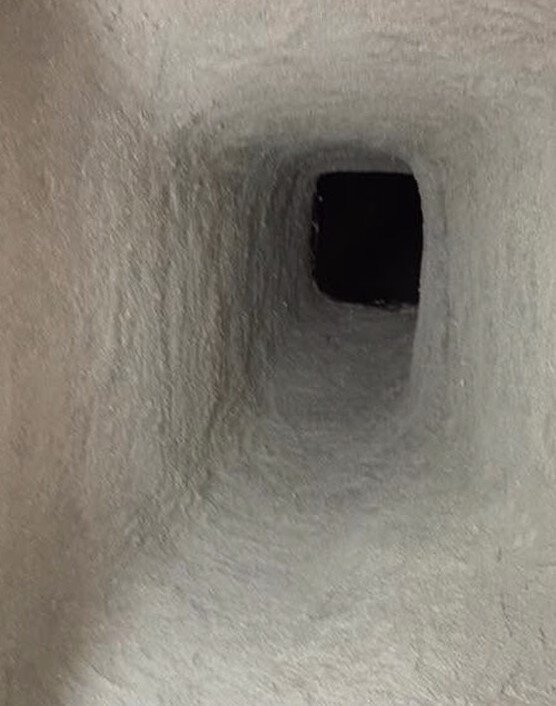
The smoke chamber is the expanded section just above the firebox where smoke gathers before moving up the chimney.
The smoke chamber is typically slanted so smoke flows into the flue at an angle. This design helps prevent gusts of air from pushing back down the chimney at inconvenient times (usually called backdraft). It’s also designed to stop debris or rain from falling into the firebox if something goes wrong with the chimney cap. Because smoke chambers have to deal with a lot of intense heat, they are made with very durable materials and fire retardant qualities. They also have to be properly sized for the size of the fireplace, otherwise serious airflow problems can result.
Signs that you may need to repair your smoke chamber
- Like the flue, creosote build-up or excess smoke flow out of the fireplace indicates a problem
- Chipped or jagged smoke chamber surface
Smoke shelf
Remember that we said the smoke chamber is usually angled to help protect the fire? That angle is called the smoke shelf. If wind or rain do get into the chimney, the shelf helps protect the fire itself and helps minimax backdrafts.
warning signs
- Any warping or cracking from heat
- Heavy creosote buildup
- Corrosion from moisture
Throat and Throat Damper
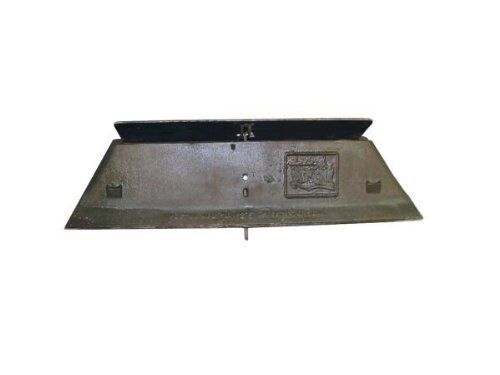
Flues generally have grates or covers that can be opened or closed to manage airflow to the fire: this is sometimes called the throat damper because it sits right at the “throat” of the chimney, or the part of the smoke chamber right about the firebox itself.
The damper is an important way to stop drafts or manage how fast the fire burns. When there is no fire burning, the damper should be closed to prevent drafts from blowing ash or cinders into the house.
warning signs
- Stuck or rusted throat damper
- Signs of warped metal from excessive heat
Firebox
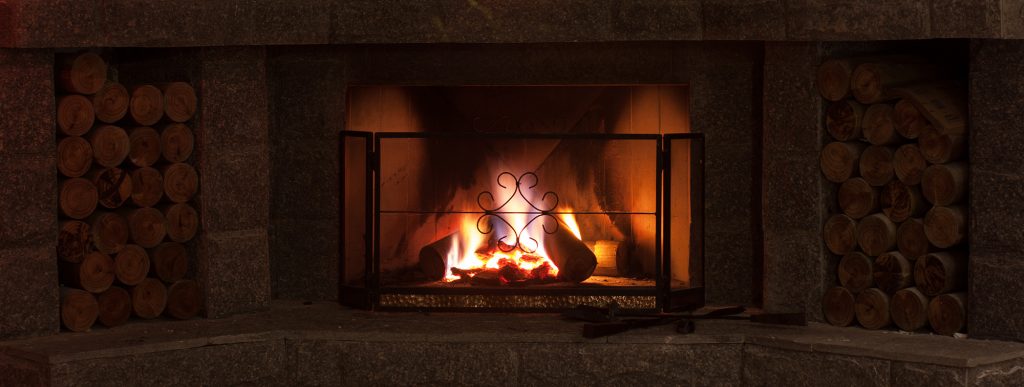
The firebox is the sturdy section of the chimney that holds the fire itself – when people talk about a fireplace, they’re usually referring to the firebox. These boxes are made with specific bricks or plaster designed to withstand fire and backed up with a base of durable mortar and concrete. Firebox sizes range depending on the size of the fireplace itself.
warning signs
- Any damage, including cracks, holes, or corrosion – this can be a dangerous fire hazard
- Soot and creosote build-up from long-term use

Thanks for explaining why we should choose a company that does counter flashing to prevent leaks in the chimney. My sister and her husband purchased a small fixer-upper home with a few repairs need to the exterior, including some brickwork on the chimney. I’ll have to share this info so they can ask specific questions to ensure they find a reliable contractor for the job.